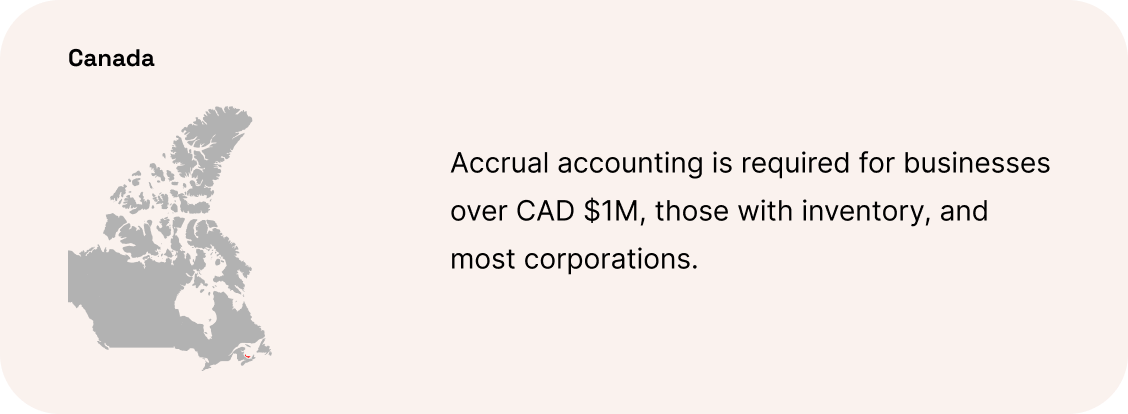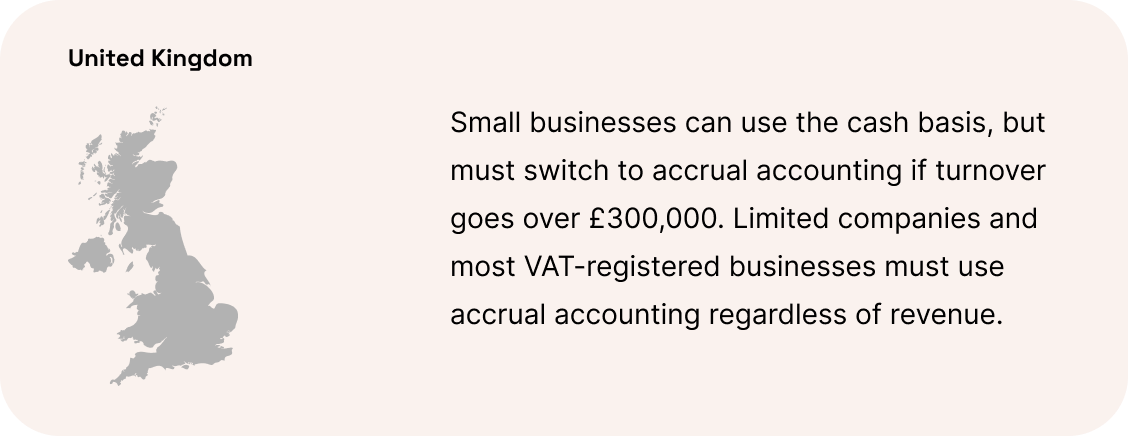Revenue Recognition: Beyond the Basics
Learn why accurate revenue recognition is essential for growing eCommerce brands. Explore common pitfalls, country-specific rules, and how to shift from cash to accrual accounting for financial clarity and compliance.

As your eCommerce business grows, how you track revenue becomes increasingly important. Many merchants start with simple cash accounting—recording money when it hits your bank account. But as you scale, this approach can paint a misleading picture of your financial health and create roadblocks with investors, lenders, and even your own decision-making.
Let's break down what revenue recognition really means for your eCommerce business and why it matters to your bottom line.
Key Highlights
When to recognize revenue
For GAAP-compliant eCommerce businesses, revenue is recognized when orders ship, not when payment is received.
Cash vs. Accrual
While cash accounting works for small businesses, accrual accounting becomes essential as you scale.
Common pitfalls
Using Shopify payout reports for revenue recognition, incorrectly handling gift cards, and mismanaging returns create financial inaccuracies.
Practical impact
Proper revenue recognition affects everything from tax compliance to investor confidence.
Country requirements
Different revenue thresholds trigger mandatory accrual accounting in the US, Canada, and UK.
What Revenue Recognition Actually Means
Simply put, revenue recognition determines when a sale counts on your financial statements.
Under cash accounting, revenue happens when money hits your account. Under accrual accounting (which is GAAP-compliant), revenue is recognized when you've fulfilled your obligation to the customer—typically when you ship their order, regardless of when they paid.
Think of it this way: If a customer places a $500 order that you fulfill next month, accrual accounting ensures that revenue appears in your financials when you actually earned it by shipping the product, not when the payment processed.
When Cash Accounting No Longer Works
Cash accounting works well for early-stage businesses because it's straightforward—you track revenue when you receive payment and expenses when you pay them.
But this approach becomes problematic as you grow:
- Your profit appears artificially high in months with many sales but few expenses
- Your profit looks artificially low in months with heavy inventory purchases
- Investors and lenders can't accurately assess your financial health
- You lack visibility into future obligations and receivables
Why Growing Merchants Switch to Accrual Accounting
Successful eCommerce businesses don't switch to accrual accounting just for compliance—they do it because it provides substantial business benefits:
Accurate profitability insights
Match expenses with the revenue they help generate, showing true performance.
Better inventory management
Track inventory as an asset rather than an immediate expense.
Improved forecasting
Predict cash flow needs more accurately by seeing upcoming obligations.
Strategic decision-making
Make data-driven choices about product lines, marketing spend, and hiring.
Funding readiness
Present financial statements that investors and lenders trust and understand.
For example, if you purchase $50,000 of inventory in March for your Q4 holiday sales, cash accounting would show a massive loss in March and inflated profits in Q4. Accrual accounting correctly shows the inventory as an asset until it sells, providing a more accurate picture of your business performance.
Common Revenue Recognition Mistakes That Cost eCommerce Businesses
Relying on Payment Processor Reports
Many merchants mistakenly use Shopify payout reports to determine revenue. These reports track when Shopify deposits funds into your account—not when you've actually earned that revenue by shipping products.
What to do instead
Track revenue based on fulfillment data, not payment processor deposits. Use accounting software that integrates with your eCommerce platform to automatically recognize revenue when orders ship.
Mishandling Gift Cards and Store Credit
When a customer buys a $100 gift card, that's not revenue yet—it's a liability (something you owe) until they redeem it.
What to do instead
Track outstanding gift card balances as deferred revenue, and only recognize revenue when customers redeem them or when cards expire (following applicable laws about expiration).
Incorrectly Managing Returns
For eCommerce businesses with significant return rates, failing to account for expected returns distorts your revenue picture.
What to do instead
Create a "refund liability" based on historical return rates. If you typically see 10% of sales returned, set aside 10% of each month's revenue to account for future returns.
Subscription and Preorder Misalignment
If a customer pays $240 upfront for a yearly subscription box, you haven't earned all that revenue immediately.
What to do instead
Recognize subscription revenue evenly over the service period—in this case, $20 per month over 12 months. For preorders, recognize revenue only when products ship, not when customers place deposits.
Country-Specific Requirements You Should Know
Revenue recognition isn't just best practice—it’s often legally required once your business reaches certain thresholds:

🇺🇸 United States:
- Businesses with gross receipts over $30M in the past three years must use accrual accounting.
- Even below this threshold, businesses that carry inventory are generally required to use accrual accounting. The IRS does allow some flexibility for smaller merchants to treat inventory as non-incidental materials, but this is subject to strict guidelines

🇨🇦 Canada:
- Businesses exceeding CAD $1M in annual revenue must use accrual accounting.
- Additionally, any business with inventory must adopt accrual accounting regardless of revenue.
- Corporations are also required to use accrual accounting unless they qualify for an exception.

🇬🇧 United Kingdom:
- Small businesses with turnover under £150,000 can use the cash basis.
- Those between £150,000 and £300,000 may still use it, but must switch to accrual accounting if turnover exceeds £300,000.
- Limited companies and VAT-registered businesses using standard VAT accounting must use accrual principles regardless of turnover.
Practical Steps to Implement Better Revenue Recognition
Document your revenue recognition policy
Create clear guidelines for when and how your business recognizes revenue across different sales channels and product types.
Set up proper accounting systems
Invest in accounting software that supports accrual accounting and integrates with your eCommerce platform.
Track deferred revenue separately
Create specific accounts for gift cards, preorders, and subscriptions to properly manage unearned revenue.
Analyze historical returns
Calculate your average return rate and build this into your financial reporting.
Consider automation
Manual tracking becomes increasingly error-prone as you scale; look for solutions that automate revenue recognition based on order fulfillment.
Beyond Compliance: The Strategic Advantage
Proper revenue recognition isn't just about following rules—it gives you a strategic advantage:
Clearer unit economics
Understand the true profitability of each product when costs and revenue are properly aligned.
More accurate forecasting
Build reliable growth projections based on accurate historical performance.
Better inventory planning
Make smarter purchasing decisions when you can see real product performance.
Increased credibility
Present financial statements that investors, partners, and lenders can trust.
Moving Forward With Confidence
Revenue recognition might seem like an accounting technicality, but it fundamentally changes how you understand your business performance. As your eCommerce operation grows, shifting from cash to accrual accounting provides the financial clarity needed to make better decisions, secure funding, and build a sustainable business.
The transition doesn't have to be overwhelming. Start by understanding your current revenue patterns, identifying the key areas where revenue recognition needs improvement in your business, and implementing processes that align with proper accounting standards.
While managing proper revenue recognition can be complex, Fulfil helps eCommerce brands streamline their accounting processes by automating revenue recognition, tracking deferred revenue, and ensuring compliance with GAAP standards. With real-time financial reporting and seamless integrations, you can focus on growing your business instead of wrestling with accounting technicalities.


.png)

